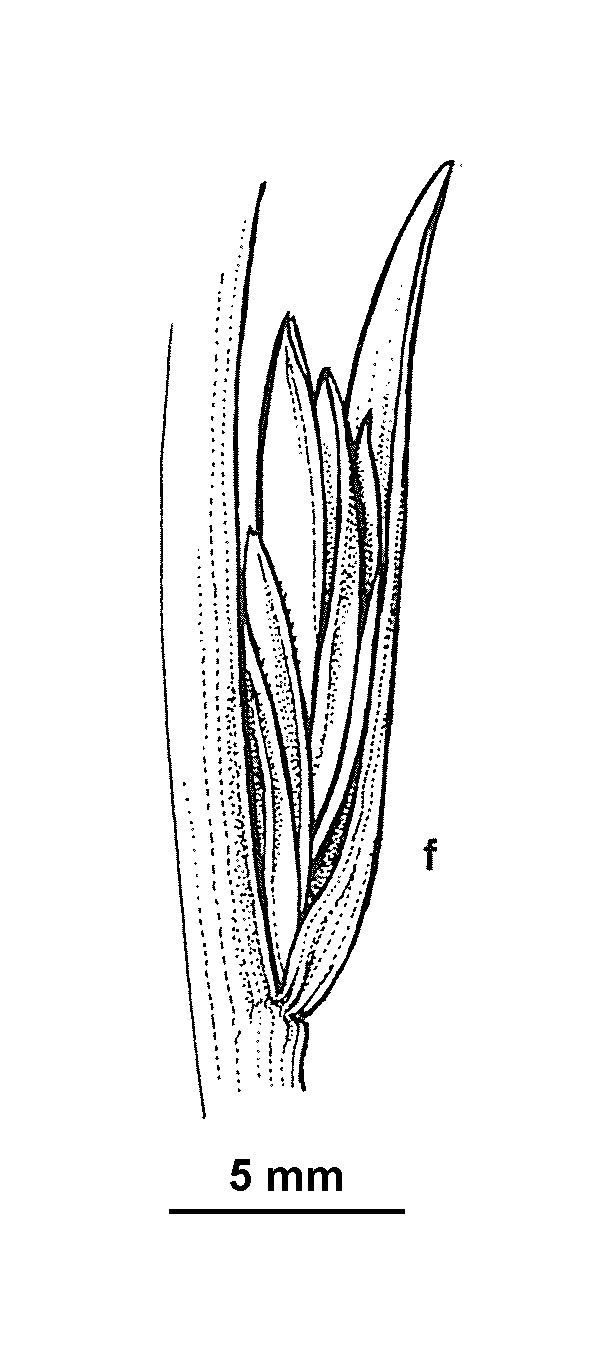Lolium temulentum
L. Bearded Rye-grassTufted annual, culms stiffly erect, to 100 cm high. Leaf-blades flat, to 40 cm long and 13 mm wide; ligules to 2.5 mm long; auricles usually well-developed, narrow, often stem-clasping. Spike to 35 cm long; rachis mostly more than 1 mm (to 3 mm) diam. Spikelets 4–10-flowered, 10–26 mm long (excluding awns when present); glume about as long as spikelet; lemma ovate to elliptic, smooth and shining, becoming plump toward maturity.
Apparently an almost obligate weed of cereal and/or flax crops originating as a contaminant of seedlots. Modern seed supplies appear to have largely, if not entirely eliminated the species from cultivation in Victoria, there being no post-1950 specimens of L. temulentum represented in the Melbourne Herbarium. Collected localities include Mildura, Dimboola, Ararat, St Arnaud, Bendigo, Weribee, Benalla, Dookie, Bairnsdale.
The European species Lolium remotum Schrank is a somewhat dubious taxon, differentiated from L. temulentum only by virtue of its more elongate inflorescence, with smaller spikelets (6-15 mm long) separated on the rachis by a distance greater than the length of the spikelets. The species appears to be an obligate weed of flax (Linum) crops and is represented by two collections at MEL, one from Leongatha (undated) and another from Werribee (1941). With the demise of the Australian flax industry (post Second World War), L. remotum appears to have also disappeared from this country.
Two apparently coextensive formas are recognized.
Walsh, N.G. (1994). Poaceae. In: Walsh, N.G.; Entwisle, T.J., Flora of Victoria Vol. 2, Ferns and Allied Plants, Conifers and Monocotyledons, pp. 356–627. Inkata Press, Melbourne.
 Spinning
Spinning




